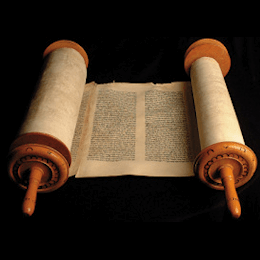Textus Receptus Bibles
Masoretic Text 1524
Old Testament
| 1:1 | שׁיר השׁירים אשׁר לשׁלמה׃ |
| 1:2 | ישׁקני מנשׁיקות פיהו כי טובים דדיך מיין׃ |
| 1:3 | לריח שׁמניך טובים שׁמן תורק שׁמך על כן עלמות אהבוך׃ |
| 1:4 | משׁכני אחריך נרוצה הביאני המלך חדריו נגילה ונשׂמחה בך נזכירה דדיך מיין מישׁרים אהבוך׃ |
| 1:5 | שׁחורה אני ונאוה בנות ירושׁלם כאהלי קדר כיריעות שׁלמה׃ |
| 1:6 | אל תראוני שׁאני שׁחרחרת שׁשׁזפתני השׁמשׁ בני אמי נחרו בי שׂמני נטרה את הכרמים כרמי שׁלי לא נטרתי׃ |
| 1:7 | הגידה לי שׁאהבה נפשׁי איכה תרעה איכה תרביץ בצהרים שׁלמה אהיה כעטיה על עדרי חבריך׃ |
| 1:8 | אם לא תדעי לך היפה בנשׁים צאי לך בעקבי הצאן ורעי את גדיתיך על משׁכנות הרעים׃ |
| 1:9 | לססתי ברכבי פרעה דמיתיך רעיתי׃ |
| 1:10 | נאוו לחייך בתרים צוארך בחרוזים׃ |
| 1:11 | תורי זהב נעשׂה לך עם נקדות הכסף׃ |
| 1:12 | עד שׁהמלך במסבו נרדי נתן ריחו׃ |
| 1:13 | צרור המר דודי לי בין שׁדי ילין׃ |
| 1:14 | אשׁכל הכפר דודי לי בכרמי עין גדי׃ |
| 1:15 | הנך יפה רעיתי הנך יפה עיניך יונים׃ |
| 1:16 | הנך יפה דודי אף נעים אף ערשׂנו רעננה׃ |
| 1:17 | קרות בתינו ארזים רחיטנו ברותים׃ |

Masoretic Text 1524
The Hebrew text of the Old Testament is called the Masoretic Text because in its present form it is based upon the Masora—the Hebrew, textual tradition of the Jewish scholars known as the Masoretes (or Masorites). The Masoretes were rabbis who made it their special work to correct the faults that had crept into the text of the Old Testament during the Babylonian captivity, and to prevent, for the future, its being corrupted by any alteration. They first separated the apocryphal from the canonical books, and divided the latter into twenty-two books, being the number of letters in the Hebrew alphabet. Then they divided each book into sections and verses.
There is a great difference of opinion as to when the Masoretic Text was written, but it was probably accomplished in the 10th -11th century. Several editions existed, varying considerably, but the received and authoritative text is that of Jacob ben-chayim ibn Adonijah, who carefully sifted and arranged the previous works on the subject. It was published in 1524.